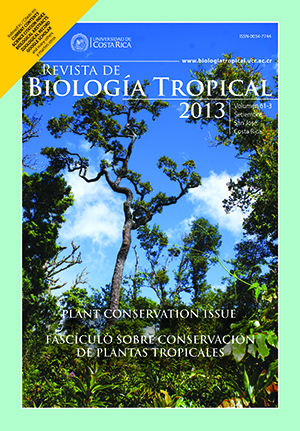Abstract
The natural regeneration process allows the mangrove forests remain over time. Both, biological and physical factors can affect the establishment and early stages along the development of trees. This study examined the response of natural regeneration of mangroves in the Turbo River delta and El Uno bay (Urabá Gulf, Colombia) to intra-annual environmental variability. We quantified mortality, survival and recruitment of seedlings of three mangrove species, seasonally during one year, in 72 semi-permanent sub-plots of 1m2. In the sub-plots, the total height and the diameter at the base of the stem of all mangrove seedlings with basal diameter less than 2.5cm were measured. Damage by herbivores was also recorded to each seedling. While Laguncularia racemosa recorded the highest rates of mortality, Rhizophora mangle showed the highest survival rate during the study period, although Avicennia germinans dominated the natural regeneration. Through a Redundancy Analysis these processes were associated to environmental variables such as: Direct Site Factor-DSF (sunlight), sediments input rate, herbivory, distances from mangroves to the river, to inner lakes, and to the coastline. These variables explained 43% of the natural regeneration variation; sedimentation rate was the most important variable, while light was very representative for the R. mangle survival. Based on historical records of precipitation, Turbo River flow rate and associated sediment loads, it was established that during the highest precipitation peak, the survival of all species decreases and during the dry season, when the conditions of flooding and sediments input were lower, it was improved. The results indicated that the sediments input rates and sunlight play an important role in the survival of natural regeneration of evaluated mangrove species.##plugins.facebook.comentarios##
Downloads
Download data is not yet available.


